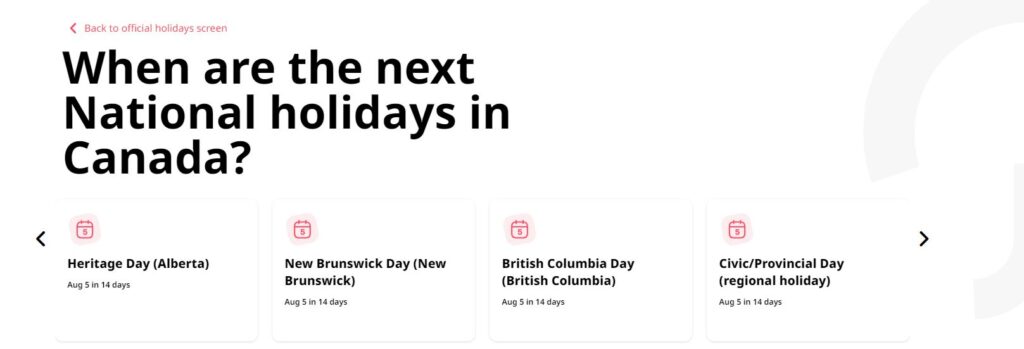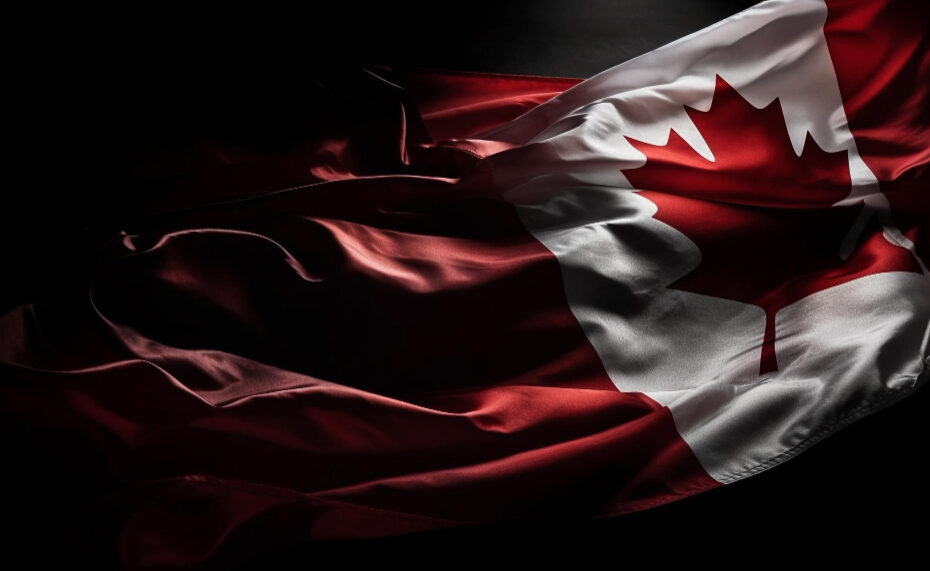Table of Contents
ToggleThe National Day for Truth and Reconciliation is observed annually on September 30th. Is a significant day in Canada dedicated to acknowledging the painful history and ongoing impacts of the residential school system on Indigenous communities. It is a day to honor the survivors, their families, and communities, and to reflect on the need for reconciliation.
National Day for Truth and Reconciliation is a call to action for all Canadians to engage in the ongoing process of reconciliation. It is a time to reflect on the injustices faced by Indigenous peoples, acknowledge the resilience and strength of survivors, and commit to creating a more inclusive and equitable society. By participating in this day with respect and a willingness to learn, Canadians can contribute to the healing process and help build a future based on mutual understanding and respect.
Take a Look at Canada’s Official Holidays From Here

Is It a Day Off?
As of 2024, the National Day for Truth and Reconciliation is a federal statutory holiday in Canada. This means that federal employees, including those in the public service and federal institutions, are entitled to a paid day off. However, the observance of this day as a statutory holiday for other workers and schoolchildren varies across provinces and territories:
1. Federal Employees:
All employees governed by the federal labor code, including those in the public service, federal institutions, and federally regulated industries such as banking, telecommunications, and interprovincial transportation, are entitled to a paid day off on September 30th. This means they do not work and still receive their regular pay.
2. Provinces and Territories Recognizing the Holiday:
British Columbia, Manitoba, Nova Scotia, Prince Edward Island, and Northwest Territories: These provinces and territories have legislated the National Day for Truth and Reconciliation as a statutory holiday. This ensures that most employees in these regions, including those working in both public and private sectors, are entitled to a paid day off. Schools in these areas are also generally closed, giving students a day off to participate in or reflect on the significance of the day.
3. Other Provinces and Territories:
In regions such as Ontario, Quebec, Alberta, Saskatchewan, and others where the day is not officially recognized as a statutory holiday, businesses or schools don’t need to close. In these areas, whether employees get a paid day off or students get a day off from school depends on individual employers and school boards. Some businesses and institutions may choose to close in recognition of the day, while others may remain open, treating it as a regular work or school day.
In summary, while the National Day for Truth and Reconciliation is a statutory holiday for federal employees and in some provinces and territories, its observance as a day off for other workers and schoolchildren is not uniform across Canada.
Historical Context
The residential school system in Canada, which operated from the late 19th century until the late 20th century, was a network of boarding schools funded by the government and run by various Christian denominations. The primary objective of these schools was to assimilate Indigenous children into Euro-Canadian culture, often through forceful means. Children were taken from their families and communities, prohibited from speaking their languages, and subjected to harsh and abusive treatment. The legacy of these schools has left deep scars on Indigenous peoples and communities.
The National Day for Truth and Reconciliation, also known as Orange Shirt Day, originated from the story of Phyllis Webstad, who, on her first day at a residential school, had her new orange shirt taken away from her. This story has become a symbol of the stripping away of culture, freedom, and self-esteem experienced by Indigenous children over generations.
Observance and Significance
First officially recognized in 2021, the National Day for Truth and Reconciliation was established following the recommendations of the Truth and Reconciliation Commission (TRC). The TRC, which operated from 2008 to 2015, was tasked with documenting the history and lasting impacts of the residential school system and making recommendations to the government to promote healing and reconciliation.
How to Participate
Participation in the National Day for Truth and Reconciliation involves various activities aimed at education, reflection, and support for Indigenous communities. Here are some ways individuals and organizations can observe the day:
- Educational Events: Attend or organize educational sessions, webinars, or workshops about the history and legacy of residential schools.
- Wear Orange: Don an orange shirt to show solidarity and raise awareness about the impact of residential schools.
- Community Gatherings: Join community events, vigils, or ceremonies that honor survivors and their families.
- Support Indigenous Businesses and Artists: Purchase from Indigenous-owned businesses or artists to support the community economically.
- Reflect and Learn: Take time to read books, watch documentaries, and listen to stories from survivors to deepen understanding and empathy.
FAQ: National Day for Truth and Reconciliation 2024
1. What is the purpose of the National Day for Truth and Reconciliation?
The purpose of the National Day for Truth and Reconciliation is to honor the survivors, their families, and communities affected by the residential school system, and to promote awareness and reflection on the historical and ongoing impacts of these schools on Indigenous communities in Canada.
2. Why is it also called Orange Shirt Day?
The day is also known as Orange Shirt Day, inspired by Phyllis Webstad’s story. As a child, she had her new orange shirt taken away on her first day at a residential school. The orange shirt has become a symbol of the stripping away of culture, freedom, and self-esteem experienced by Indigenous children over generations.
3. How can individuals participate if they do not have the day off?
Individuals who do not have the day off can still participate by wearing orange, attending evening events or educational sessions, engaging in discussions about the importance of the day, and supporting Indigenous communities through donations or purchases from Indigenous-owned businesses.
4. Are there any national events or ceremonies that take place on this day?
Yes, various national and local events, ceremonies, and educational activities take place across Canada. These may include memorials, cultural performances, educational webinars, and community gatherings. Check local listings and community boards for events in your area.
5. How can schools participate in the National Day for Truth and Reconciliation?
Schools can participate by organizing educational activities, such as inviting Indigenous speakers, holding workshops on Indigenous history and culture, and encouraging students to wear orange. Teachers can integrate lessons about the residential school system and the importance of reconciliation into their curriculum.
6. Can businesses that are not required to close still observe the day?
Yes, businesses that are not required to close can observe the day by promoting awareness among their employees and customers. This can include wearing orange, sharing information about the significance of the day, and supporting Indigenous communities through fundraising or other initiatives.
7. What resources are available for learning more about the residential school system and reconciliation?
There are numerous resources available, including the Truth and Reconciliation Commission’s reports, books, documentaries, and websites dedicated to Indigenous history and issues. Libraries, educational institutions, and Indigenous organizations often provide access to these materials.
8. How does the recognition of this day contribute to reconciliation?
Recognizing this day contributes to reconciliation by acknowledging the injustices faced by Indigenous peoples, educating the broader public about these issues, and fostering a collective commitment to addressing the legacy of the residential school system. It is a step towards healing and building a more inclusive and equitable society.
9. Are there specific symbols or colors associated with the National Day for Truth and Reconciliation?
The primary symbol associated with this day is the orange shirt, representing the impact of residential schools on Indigenous children. Orange has become the color of the movement, symbolizing resilience and hope for a better future.
10. How can workplaces create a meaningful observance of this day?
Workplaces can create a meaningful observance by organizing educational sessions, inviting Indigenous speakers, encouraging employees to wear orange, and promoting discussions about the importance of reconciliation. Supporting Indigenous initiatives and businesses can also be part of a meaningful observance.
11. Is there a specific age group that should be targeted for education on this day?
Education about the National Day for Truth and Reconciliation should target all age groups. While age-appropriate materials and activities should be used, it is important for children, teenagers, and adults to learn about the history and significance of the day to foster a widespread understanding and commitment to reconciliation.
Conclusion
In conclusion, the National Day for Truth and Reconciliation 2024 is a crucial opportunity for Canadians. To come together to honor the past, acknowledge the present, and commit to a better future for all. Whether through taking the day off to participate in meaningful activities or educating oneself and others about the significance of the day. Every effort counts towards fostering reconciliation and healing.
